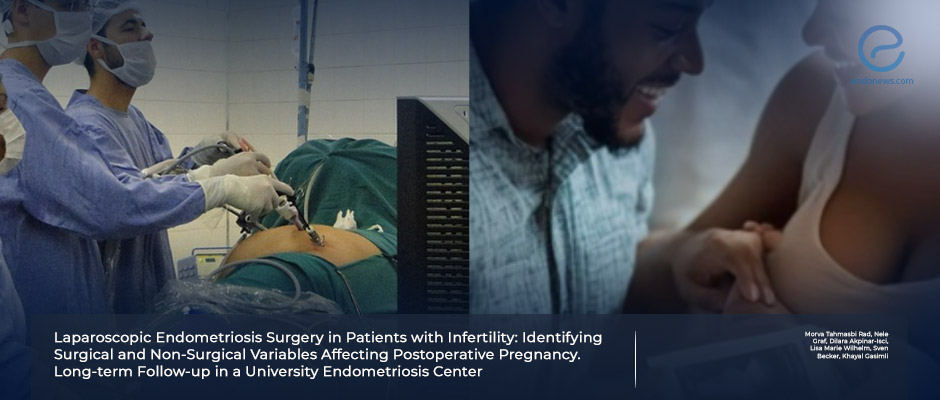Impact of appropriate surgery on endometriosis-related infertility
Feb 14, 2025
Each year of untreated endometriosis-related infertility reduces the chance of pregnancy by 2.2-27%.
Key Points
Importance:
- Careful planning and the timing of the surgery are important in patients with endometriosis-related infertility.
Highlights:
- There is a positive impact of well-executed endometriosis surgery on the ability of both primary and secondary infertile women to conceive.
What's done here:
- Authors from the University of Frankfurt, Germany, set up a retrospective study about the women who underwent laparoscopic surgery in their clinic for ten years beginning in January 2007.
- Study included 102 patients who wished to conceive after the surgery with a diagnosis of endometriosis-related infertility..
- Non-surgical variables were: duration and type of infertility, number of endometriotic lesions, presence of deep endometriosis, rASRM, disease recurrence, age, and BMI.
- Surgical variables were the number of previous operations, complete resection of the lesions, number of ovarian operations, methods for removing endometriomas, peritoneal cauterization, and normalization of the anatomy.
- Postoperatively, for almost a 70-month follow-up data was collected using questionnaires. Live-birth deliveries and ART as a treatment method were also analyzed.
Key Results:
- Each year of untreated endometriosis-related infertility reduces the chance of pregnancy by 2.2 to 27%.
- 32,4% of the patients conceived spontaneously while the rest used ART. The live birth rate was 58,8% after surgery.
- The number of endometriosis lesions significantly impacted pregnancy chances, with each additional lesion decreasing the likelihood of pregnancy by 6–29%.
- There was a notable difference in pregnancy rates between those who had complete (83% after 24 months) vs. incomplete (55.1% after 42 months) resection of lesions.
- Recurrence occurred in 22.5% of patients over 36 months, but 47.8% of these patients still became pregnant.
Lay Summary
Endometriosis surgery by removing all visible lesions and repairing damaged tisue is important to build normal pelvic anatomy. It is still difficult to predict postoperative pregnancy rates among women with endometriosis who suffer from infertility.
This retrospective study, conducted by Tahmasbi Rad et al. from the Department of Obstetrics and Gynecology at the University of Frankfurt, evaluated factors influencing postoperative pregnancy rates in women with endometriosis. The study followed 102 women who underwent laparoscopic surgery at a tertiary clinic between 2007 and 2017, with an average follow-up of 70 months.
The findings highlighted the positive impact of well-executed endometriosis surgery on the ability of both primary and secondary infertile women to conceive. Two-thirds of the women required assisted reproductive technology to achieve pregnancy. Although the cumulative pregnancy rate during the follow-up period was 70%, the live birth rate was 58.8%
The study found that the number of endometriosis lesions significantly impacted pregnancy chances, with each additional lesion decreasing the likelihood of pregnancy by 6–29%. Patients with adhesions had a 55% lower chance of conceiving after surgery.
There was a notable difference in pregnancy rates between those who had complete (83% after 24 months) vs. incomplete (55.1% after 42 months) resection of lesions. Recurrence occurred in 22.5% of patients over 36 months, but 47.8% of these patients still became pregnant. Most importantly, each year of untreated endometriosis-related infertility reduced the chance of pregnancy by 2.2 to 27%.
. This retrospective study was recently published in Geburtshilfe Frauenheilkunde.
Research Source: https://pubmed.ncbi.nlm.nih.gov/39758121/
infertility laparoscopy surgical intervention live births ART fertility index pregnancy rates endometriosis.

